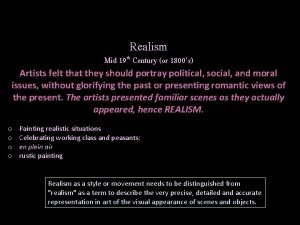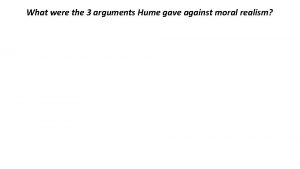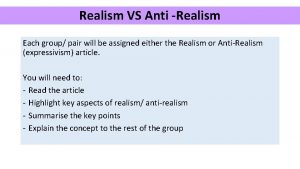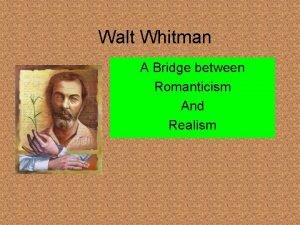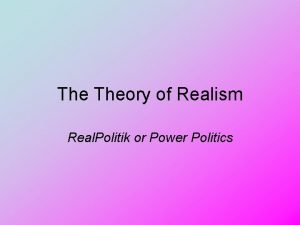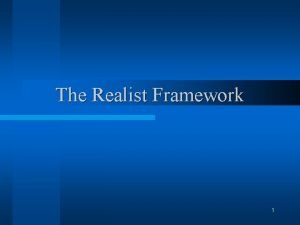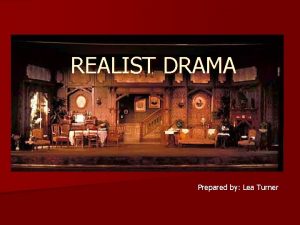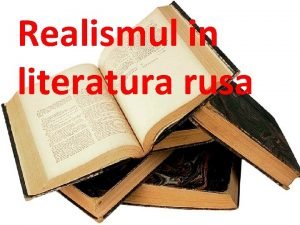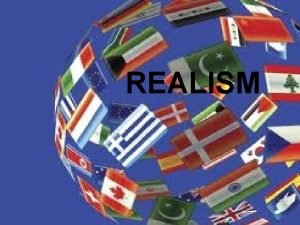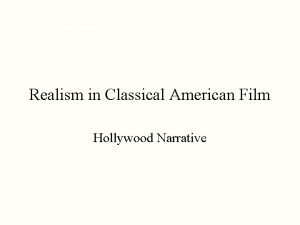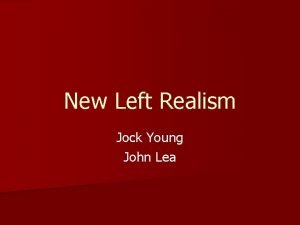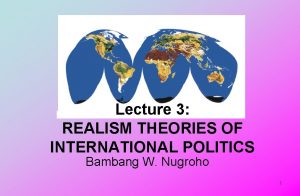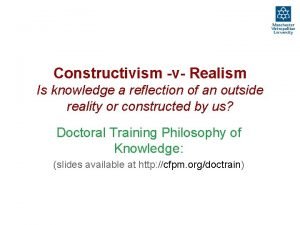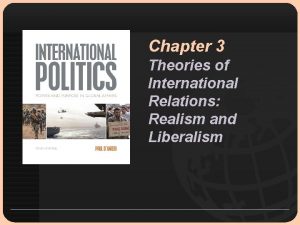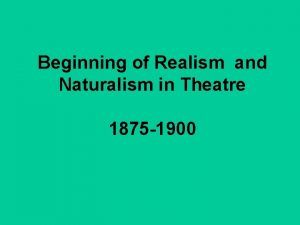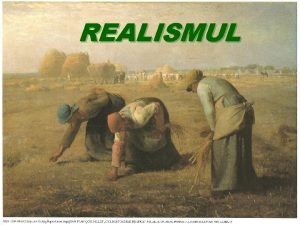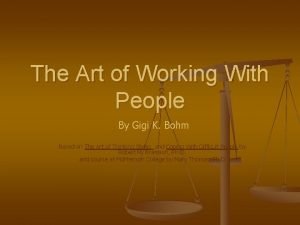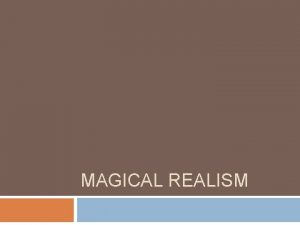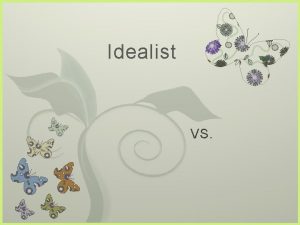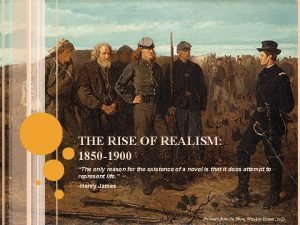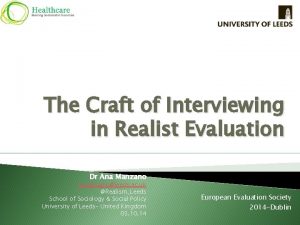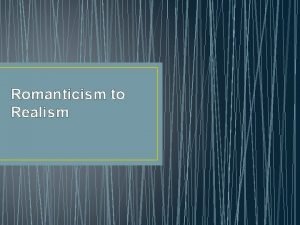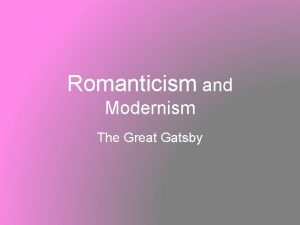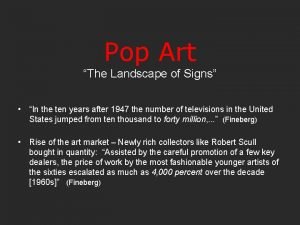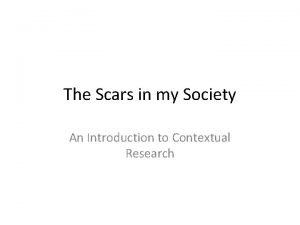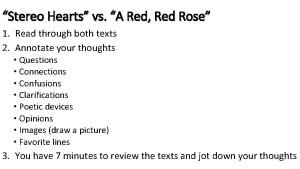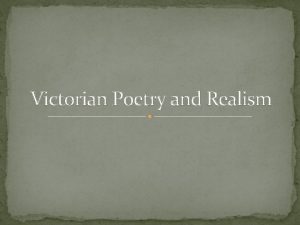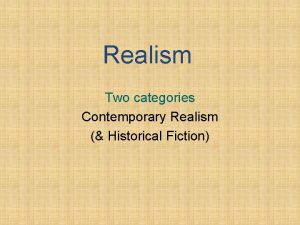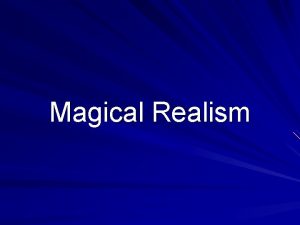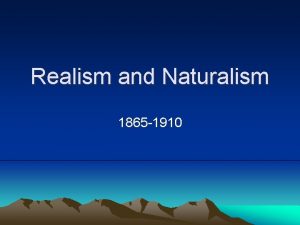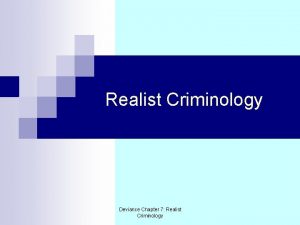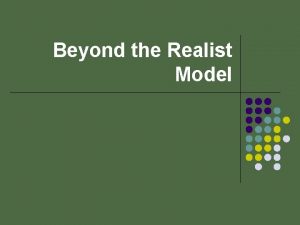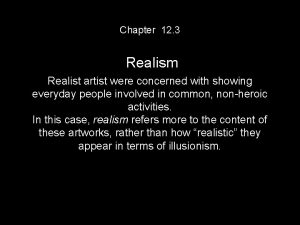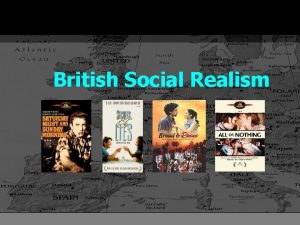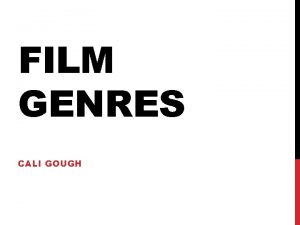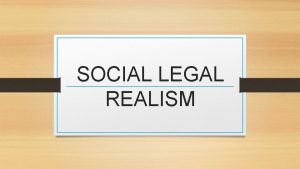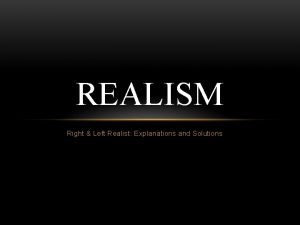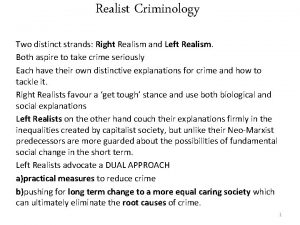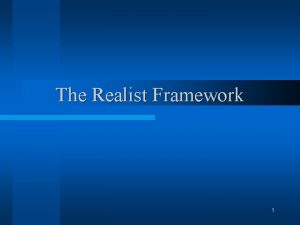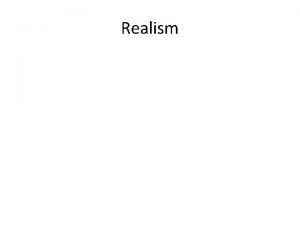Chapter 15 4 Social Realism Social Realist artists




























- Slides: 28

Chapter 15. 4 Social Realism Social Realist artists created pictures meant to attack the dehumanization of industrial and urban life. The idea of artwork serving political protest was not new to the world, but it was a particularly strong movement during the Great Depression of the 1930 s — a period of widespread economic distress and political upheaval.


Ben Shahn (1898 -1969) Handball, 1939, tempera, 22 x 32” The political message of this picture is not as direct as some other images; the artist is suggesting the waste of human resources when unemployment is high. Sport here is more about killing idle time rather than having fun.

Ben Shahn (1898 -1969) A versatile visual artist, Shahn took photographs of the American people in his travels across the country. He borrowed from these for painted images without slavishly reproducing photographic detail; he flattens form for dramatic impact in a manner which suggests the simplicity of folk art.

Ben Shahn (1898 -1969) Shahn often depicted circumstance of worker unrest, labor union protests, and damaging violence.

Ben Shahn (1898 -1969) Shahn often depicted circumstance of worker unrest, labor union protests, and damaging violence.

Ben Shahn (1898 -1969) Shahn’s clear, graphic style readily lent itself to practical use as illustration for print media.

Ben Shahn (1898 -1969) Shahn’s work also depicted human suffering experienced in the aftermath of natural disasters.

Reginald Marsh (1898 -1954) Oil on canvas Marsh painted the people of the New York City streets during the 1930 s. He conveys a sense of energy, crowds and garish artificial city lights.

Reginald Marsh (1898 -1954) The Normandie, 1953, watercolor on paper, 30 x 50”

Reginald Marsh (1898 -1954) Watercolor on paper

Reginald Marsh (1898 -1954)

Isabel Bishop (1902 -1954) Oil on canvas Bishop developed a personal style of realism. She taught at the Art Students League, and often painted working women in the Union Square neighborhood where she had a studio.

Isabel Bishop (1902 -1954) Oil on canvas Bishop developed a personal style of realism. She often painted working women in the Union Square neighborhood where she had a studio.

Isabel Bishop (1902 -1954) Oil on canvas Bishop developed a personal style of realism. She often painted working women in the Union Square neighborhood where she had a studio.

Isabel Bishop (1902 -1954) Oil on canvas Bishop developed a personal style of realism. She often painted working women in the Union Square neighborhood where she had a studio.


Jacob Lawrence (1917 -2000) Gouache and watercolor Lawrence combined intense colors with a modern use of contour shapes to present a narrative addressing the experience of working class African Americans.

Jacob Lawrence (1917 -2000) Gouache and watercolor Although the objects are presented as flat shapes, Lawrence implies the illusion of space by his use of overlapping forms, and placement at angles which suggest perspective.

Jacob Lawrence (1917 -2000) Gouache and watercolor Lawrence manipulates the relative scale of objects within his carefully cropped images to suggest the illusion of spatial depth.

Jacob Lawrence (1917 -2000) Gouache and watercolor Bold, colorful rhythmic patterns maintain visual interest, reinforcing the narrative intent of the imagery.

Jacob Lawrence (1917 -2000) Gouache and watercolor Lawrence presented images of working class African-Americans which hadn’t been previously seen in the professional art world.

Jacob Lawrence (1917 -2000) Gouache and watercolor Lawrence was able to imply detailed information by skillfully activating flat forms and colors within a carefully controlled composition.

Jacob Lawrence (1917 -2000) Lithograph print The repeated visual elements of hand saw and lumber create a lively visual pattern — while simultaneously establishing the interior space of the room. All detail has been eliminated.

George Tooker (b. 1920) Government Bureau, 1956, Egg tempera, 19 x 29” Specializing in a meticulous egg tempera painting format, Tooker created dream-like images of alienation and loneliness. He utilized precise shapes, particular light, and exacting perspective.

George Tooker (b. 1920) Egg tempera Tooker created dream-like images of urban alienation and loneliness. Many subway stations in New York City contain complex spaces such as the one seen here.

George Tooker (b. 1920) Egg tempera Tooker’s nightmarish fantasy images employ convincingly realistic light and space. These unpleasant places are painted with beautiful, glowing colors.

George Tooker (b. 1920) Egg tempera Many of Tooker’s spaces are impossible and irrational. This may add to the viewer’s discomfort.
 Realism artists 1800s
Realism artists 1800s No moral
No moral Briefly summarise
Briefly summarise Realism vs anti realism
Realism vs anti realism Walt whitman realism
Walt whitman realism Realist theory
Realist theory Assumption of realism
Assumption of realism Lea turner
Lea turner James q wilson right realism
James q wilson right realism Definitie realism
Definitie realism Nature of realism
Nature of realism Realist narrative
Realist narrative Lea and young 1984
Lea and young 1984 Realist theory of international relations
Realist theory of international relations Victor petrini
Victor petrini Constructivist vs realist
Constructivist vs realist Realist theory of international relations
Realist theory of international relations Realism in drama definition
Realism in drama definition Definiție realism
Definiție realism Synthesist thinking style
Synthesist thinking style Realism genre
Realism genre Personailties
Personailties Realism 1850
Realism 1850 The craft of interviewing in realist evaluation
The craft of interviewing in realist evaluation Gleaners painting
Gleaners painting Modernism great gatsby
Modernism great gatsby October 18 1977
October 18 1977 Scars in society
Scars in society What is a simile in stereo hearts
What is a simile in stereo hearts
